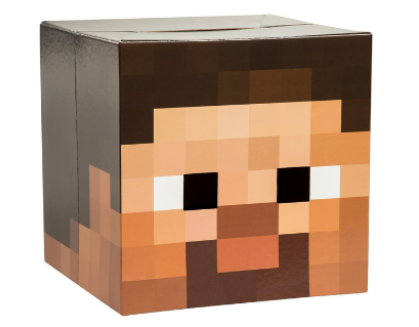Kicking off a personal quest in game development feels a bit like picking up a new game—exciting, a little intimidating, and full of unexpected discoveries. Many aspiring creators worry about the upfront costs or complicated tools. Yet, plenty of free guides, communities, and platforms can help newcomers gain essential skills without breaking the bank.
Learning the ropes of game creation lets you understand the mechanics behind your favorite titles, from graphics to gameplay logic and sound. It opens up a world that’s both creative and technical, letting you bring your own stories or challenges to life on the screen.
This guide introduces practical, approachable ways to learn game development skills for free. You’ll find realistic steps, sample projects, and a comparison of the most popular learning resources geared toward total beginners. Jump in and discover what you can build next.
Kickstart Learning: Free Platforms that Lower the Barrier
Choosing the right free platform sets the stage for every other game development lesson. It’s easier to start on a site that provides beginner-friendly courses, open-access tools, and a supportive forum for real-time help.
Before you pick a platform, jot down your specific needs—like project types you want to build or which programming languages spark your curiosity. Matching tools to your interests helps you stick with learning through setbacks.
Evaluating Usability Before You Dive In
When checking out a new course or community, look for clear navigation, an intuitive interface, and search features for revisiting lessons. Notice if you can bookmark or save progress for future sessions.
Check if the platform offers a sandbox or demo area. Practicing skills in a no-pressure zone leads to faster growth and confidence.
If you ever think, “I’m lost in this menu,” try skipping ahead to walkthrough videos or guides. These shortcuts bring you back on track whenever you feel stuck.
Community Support in Your Learning Routine
Every reliable platform has a space where you can ask for help, like a forum or dedicated Discord group. Introduce yourself, mention you’re new, and start with small questions.
User-led Q&A threads are pure gold for solving common hiccups. Posting screenshots or sharing results lets others give targeted advice, making your experience less isolated and more collaborative.
Bookmark popular threads about beginner mistakes or quick fixes. When you see advice like “Save copies of every step!” just do it; one saved file may spare you hours of rework.
| Platform | Main Focus | Key Feature | Next Step |
|---|---|---|---|
| Unity Learn | Game engine basics | Interactive tutorials | Try a “microgame” project |
| Codecademy | Programming logic | Free coding sandbox | Build a simple game loop |
| Coursera Free Courses | Structured learning | Expert video lectures | Set a weekly goal |
| Khan Academy | Drawing/code animation | Live preview canvas | Experiment with sprites |
| OpenGameArt Forums | Asset sharing | User requests & critiques | Ask for asset suggestions |
Build Basic Coding Habits With Zero-Cost Tutorials
Getting into game programming starts with habits—routine, pace, and quick wins instead of marathons. Free tutorials teach core logic using familiar examples and real game structures, letting you code lines that actually do something recognizable on screen.
Pick a language through the lens of the tool you’re eyeing. Python is approachable for scripting; C# is central for Unity logic. Jump in where examples link directly to playable features like character controls or scoring.
Crafting a Step-by-Step Coding Routine
Begin by blocking 20 minutes daily for tutorials focused on movement, user input, and simple graphics. After watching a demo, hand-type the code as shown—don’t just paste it.
Repeat small code exercises until your hands remember basic syntax and structure. When a tutorial says, “Try tweaking this value,” say the change out loud and test directly. Articulate as you code; it cements understanding faster.
- Write print statements after every logic change to track output, building an action-feedback loop that teaches you how computers “think.” Stay curious about every result.
- Copy and paste only after you fully understand—rephrasing the code in your own words ensures you connect logic to effect rather than just mimicking and forgetting.
- Practice debugging scripts immediately after errors pop up. Reading the console builds the habit of solving, not just moving on when stuck. Debugging is as critical as writing code.
- Share code snippets in forums and request reviews, focusing on feedback like “This runs, but could be shorter.” Practical peer review accelerates insight you can’t get alone.
- Celebrate small milestones, like making a sprite move using arrow keys. Record a screen capture or GIF for future motivation and social sharing.
These steps create a do-and-see cycle essential for learning programming outside the classroom.
Checklist for Your First Game Script
- Install the chosen language/tool
- Follow an official beginner guide
- Replicate each step manually
- Test after each code segment
- Adjust variables and track results
Break tasks into five-minute chunks—each completed step builds your confidence for the next.
Experiment with Ready-to-Use Asset Libraries
Asset libraries—collections of free graphics, music, and effects—help you focus on programming while still making polished projects. Downloading and swapping art or sound removes the time sink of original content creation, so you get to see progress on real builds.
Using pre-made assets is like using toy blocks—the reward is a functional prototype, not the block design itself. Credit the artists and read usage licenses before you drop resources into your project folders.
Matching Visuals and Sound With Project Goals
Select assets that reinforce your concept. For example, side-scroller tiles fit action games, while pixel avatars suit RPGs. Test how music tempo sets mood—fast beats energize, ambient tracks support strategy.
Replace placeholder art mid-build to prevent stalling out from “ugly prototype syndrome.” Keeping it visually motivating keeps momentum high. Swap music genres to shift in-game mood instantly, gaining a sense of control.
After dropping a file in, update your asset list so future changes don’t break references—treat it like keeping batteries ready for a toy. It saves time when troubleshooting later.
Following Asset Attribution Rules
Read each asset’s license before using it. Attribute artwork or sound as instructed, typically by adding a text credit file in your export folder. Copy exact wording if the site provides a template.
When sharing demos online, add attribution to the splash screen or credits sequence. A simple on-screen line, “Sound by [Artist],” covers both respect and legal bases.
Contact the creator with a “Thank you” note if you release a final build. This small gesture opens doors for feedback and future collaborations.
Compare Instructional Styles for Game Logic Lessons
Every learner clicks with a different instruction style—some prefer video walkthroughs, others like step-by-step blogs. Try both and notice which style makes you reach those “aha!” moments fastest. Mixing formats deepens your skill spectrum.
Consider a real scenario: “I’m following a YouTube tutorial, but the code breaks.” Switch to a text guide for troubleshooting, since written steps are easier to skim and backtrack than video timelines.
| Format | Pacing | Interaction |
|---|---|---|
| Video Series | Real-time | Pause and code-along |
| Written Blog | Step-wise | Comment for feedback |
| Online Course | Modular | Quiz after each lesson |
If you hit a stuck point, use the table: switch formats, get instant troubleshooting, and return with renewed energy and new perspectives.
Simulate Real-World Problems Through Game Jams and Challenges
Game jams mimic the crunch mode of professional studios in a friendly way. Limited time and strict themes turn loose learning into precise goals. Doing a jam lets you practice teamwork, deadlines, and iterative workflows at zero cost.
Consider a jam as a short, themed sports match—rules are clear, the competition is playful, and the feedback is immediate. Participants finish with a shareable project and a better sense of skill gaps or interests for next time.
If you’re solo, use jams for focused personal sprints. Try to build something minimal: “a maze with moving obstacles” or a game around the theme “Growth.” The key is finishing, not polishing.
Pair up with others on forums, using short scripts to introduce yourself: “I’m into music, can help with sound design, looking for a team to join.” Communication unlocks collaborations and a richer project outcome.
Take note of what snags you—incomplete assets, unclear code, rushing to meet deadlines—these lessons mirror real project management and can be instantly applied to your own learning workflow.
Sharpen Skills by Troubleshooting With Online Communities
- Describe issues in plain language, such as: “My sprite won’t jump when pressing space, but left/right works fine.”
- Post screenshots or snippets to illustrate problems visually and speed up feedback from experienced members.
- Follow up with specific questions: “How do I update my Unity input code for newer versions?”
- Search forums first for similar posts, then reply to ongoing threads with updates or thanks; builds positive rapport for future help.
- Offer your own solutions on topics you’ve mastered; teaching reinforces retention and helps others.
- Save helpful answers in a personal document for reference during late-night coding sessions.
Treat every troubleshooting challenge like a riddle—solving it strengthens troubleshooting logic for all future projects.
The real value in these habits is twofold: you receive guidance when stuck and slowly build confidence in solving problems before asking for help. Over time, this cycle creates independence and creativity as your scripts grow.
Choose Your Path and Start Prototyping Today
Consider this journey as putting together a toolkit for creative play, where each free resource adds a useful part. Use micro-courses and forums as your player’s manual—turn to them when specific features baffle or inspire you.
Your progress might resemble a patchwork at first—some polished demos, some broken builds, a notebook full of abandoned ideas. With every finished sample or question answered, you inch closer to mastering both process and product.
Setting aside anxiety about gaps or mistakes is crucial. Game development rewards small, steady steps like testing a jump mechanic or reusing assets. Each task tackled is one more move from “player” to “designer.”
Bookmark your favorite resources from today’s table or lists. Next time you feel overwhelmed about “where do I start?” just open your bookmarks, revisit a challenge or asset, and build something new right away.
Your Next Steps in Free Game Development Learning
Building a solid foundation in game development basics is more achievable than ever with the right free resources. Instead of waiting for the perfect time, pick a course or challenge from this guide and try a project today.
The process thrives on momentum and curiosity. If you complete a coding tutorial, challenge yourself with a game jam or join a forum discussion tomorrow. Keeping the cycle active boosts your results while keeping things interesting.
Sharing your questions and demo builds lifts others up, and they’ll do the same for you. Embrace swapping assets, debugging, and posting for help as core skills, not secondary chores.
Remember, game development is a blend of creativity and logic. Stay patient, celebrate messy progress, and keep test-driving every tool that’s free and feels right for your goals. Consistent action trumps hesitation every time.
Every legendary developer started by layering knowledge: one forum post, one tutorial, one game-analyzing session at a time. Your journey can start today—with zero cost and unlimited creative potential.

